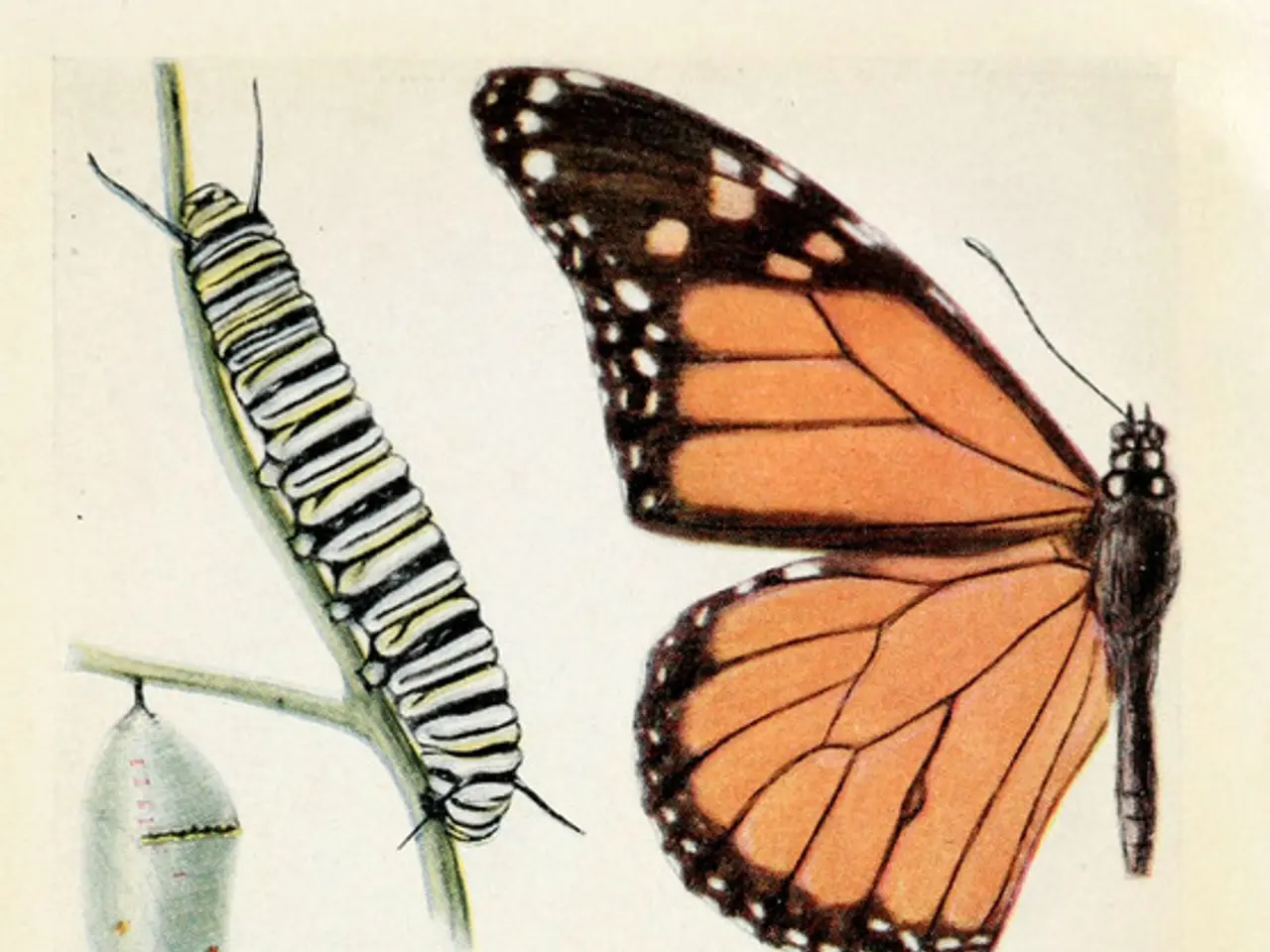Politicians in Denmark urge for a strategic approach to combat the destruction caused by invasive caterpillars, referring to them as 'caterpillars from hell.'
In a recent development, the notorious Oak Processionary Moth caterpillars have been discovered in Horsens, Jutland, marking the first time they have been spotted in this region of Denmark [1]. This finding follows their detection at a daycare in Horsens, prompting immediate action from the Danish authorities to mitigate the risk posed by these toxic caterpillars.
These caterpillars, often referred to as the "caterpillar from hell," are dangerous to humans and animals as they are covered in 60,000 tiny hairs containing a protein called thaumetopoein [1]. This protein can cause skin rashes, itching, and respiratory issues, underscoring the importance of prompt and professional intervention when they are found.
To ensure public safety, the Danish Patient Safety Authority advises avoiding all contact with the caterpillars or any nests, soil, or vegetation around infected trees [1]. If contact is made, it's advised to immediately rinse the affected area with lukewarm water and have a thorough shower. In case of contact with the eyes, rinse them thoroughly and avoid touching or rubbing them [1].
In the event of severe symptoms, worsening conditions, or difficulty breathing, seek medical attention [1]. It's also crucial to report any sightings of nests or infestations to your local authority [1].
As the problem appears to be more prevalent in Odense, which has already spent approximately 3.5 million Danish kroner to spray oak trees to get rid of the caterpillars [2], calls for national guidelines and a single public authority to manage this issue have been made. Leila Stockmarr, the Greens' environmental spokesperson, has advocated for national guidelines to prevent the spread of the caterpillar [2]. Others, including Hans Peter Ravn and Hans Kristian Skibby, share this view, believing there should be a single public authority with responsibility for combatting the larva [2].
Mette Abildgaard, political spokesperson for the Conservative People's Party, has also called for a national action plan to ensure immediate action when the caterpillar is spotted and to prevent its spread [2]. Local authorities are planning to monitor the area closely with additional inspections to prevent any possible spread [2].
In hard-hit areas like Odense, financial assistance may be provided to help combat the problem [2]. Due to financial pressures, Odense now focuses on treating high-risk areas, such as schools, playgrounds, and retirement homes [2].
It's essential to maintain awareness and caution when in oak tree areas during the caterpillar season, as the hairs from the caterpillars can travel up to 15 meters in windy conditions, particularly in affected areas like Odense on the island of Fyn [2].
As the situation continues to develop, it's important for the public to stay informed and vigilant, following public health advice regarding affected areas, especially in places like schools or daycare centers where vulnerable populations are present [1][2]. No new information about political action plans, national guidelines, or a single public authority for combatting the larva was provided in this paragraph.
References: [1] https://www.dr.dk/nyheder/indland/oak-processionary-moth-i-danmark-de-er-giftige-og-farlige-for-mennesker-og-dyre [2] https://www.tv2.dk/nyheder/regioner/syddanmark/oak-processionary-moth-i-danmark-farligt-for-mennesker-og-dyre-og-koster-millioner-i-bekampelse
- The notorious Oak Processionary Moth caterpillars, also known as the "caterpillar from hell," are not only harmful to humans and animals but also pose a threat to environmental science due to their ability to cause skin rashes, itching, and respiratory issues.
- As the Oak Processionary Moth infestation appears to be more prevalent in areas like Odense, there have been calls for the implementation of national guidelines and a single public authority to manage this issue effectively.
- In the midst of this scenario, it's crucial for the public to stay updated on news related to the Oak Processionary Moth, particularly regarding political action plans, national guidelines, and a single public authority for managing this issue.
- Beyond public health concerns, the expanding reach of the Oak Processionary Moth caterpillars in regions like Denmark could have significant implications for both politics and climate-change discussions, as the potential impact on general-news and the environment is far-reaching.







